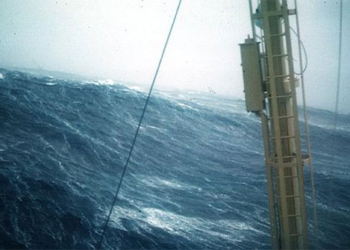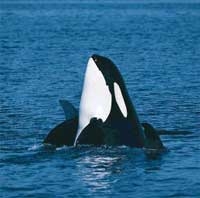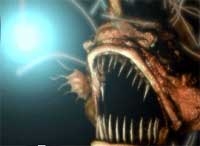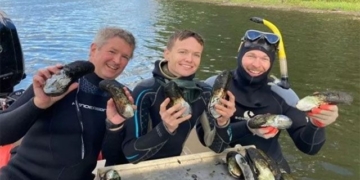The bottlenose dolphin can mate with the beluga whale and give birth to healthy offspring due to both species having 44 chromosomes.
“Wholphin” is the nickname for a hybrid species born from the rare combination of different marine mammal species, most commonly involving the bottlenose dolphin and the beluga whale. However, this is not the only recorded case of interspecies breeding in the ocean, according to IFL Science.
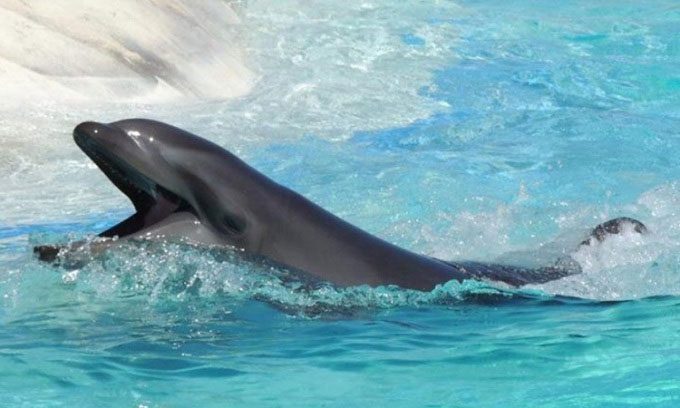
Kekaimalu on her 30th birthday in 2015. (Photo: Kyle Kittleson).
The first wholphin was born at Tokyo SeaWorld in 1981 but only lived for 200 days. In 1985, another female hybrid named Kekaimalu was born from the “unusual” pairing of male beluga whale I`anui and female Atlantic bottlenose dolphin Punahele.
“The training team suspected something was different when they first saw the calf. It was darker than the other dolphins and its snout appeared truncated,” said John Blanchard, an instructor at Tokyo SeaWorld. In reality, a wholphin is not a hybrid of dolphins and whales since the beluga whale belongs to the dolphin family. However, they are members of two distinct species, making Kekaimalu an example of a true hybrid.
The birth of this marine mammal hybrid is particularly surprising given the size difference between the two parent species. Bottlenose dolphins typically measure about 2 meters, while male beluga whales can exceed 5 meters in length. Clearly, producing a hybrid requires impressive physical capability. Previously, researchers had noted many instances of bottlenose dolphins and beluga whales playing and foraging together in the wild.
According to researchers, if two species are relatively close and share the same number of chromosomes, they can sometimes interbreed and produce healthy offspring. For instance, domestic dogs and wolves both have 78 chromosomes arranged in 39 pairs, allowing them to crossbreed with little effect. The same is true for bottlenose dolphins and beluga whales, as they both have 44 chromosomes. In Kekaimalu’s case, she continued to reproduce normally, pairing with at least two male bottlenose dolphins and giving birth to three calves.
In addition to Kekaimalu, scientists have documented several hybrids resulting from different marine species, including whales, dolphins, and porpoises. In 2018, researchers discovered a new dolphin hybrid in the waters around Hawaii, believed to be the offspring of a rough-toothed dolphin and a melon-headed whale. In 2019, another group of scientists at the Natural History Museum of Denmark studied a whale skull found on an Inuit tool shed roof in Disko Bay, western Greenland. Genetic analysis revealed the specimen was 54% similar to a beluga whale and 46% similar to a narwhal. They concluded it was a hybrid of the two species, naming it narluga.








































